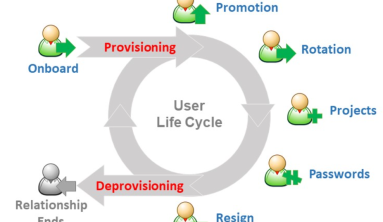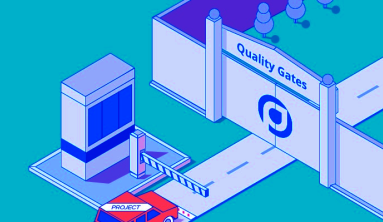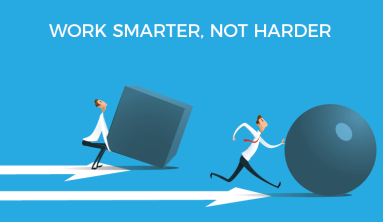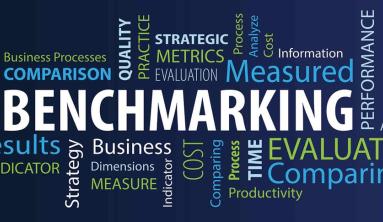A staggering 31,80,000 search results! this is what Google showed, when I clicked the enter button after typing the buzzword ’gamification’. Gamification is the use of game elements and game mechanics to non-game contexts, which include marketing, customer loyalty, HR as well as learning. Gamification in e-learning or gamified e-learning, as it is popularly called is gaining momentum and many organizations are using it or planning to use it in future.
So if you are wondering how to use gamification in e-learning then this post will answer it for you. I have put together seven different areas where gamification can be used in e-learning. For convenience, I have categorised the e-learning into two sections-
1.Learning and educating the employees of the organisation.
2.Learning and educating the customers of the organisation
Let’s see first what are the effective uses of gamification of e-learning inside an organization?
1.Increasing sales effectiveness
In every organization, the role of the sales force is very important and is upto the organization to ensure that their sales teams are highly competitive. To be competitive in the market, the sales teams should be trained to have the right sales orientation and a thorough product knowledge.
But one of the common challenges faced by all modern day organizations are about training their sales team.
A traditional classroom training becomes rather impossible as the salesforce is spread across different geographical locations.
Another important challenge is the lack of learner engagement with the sales training programs. Overcoming both the above-mentioned challenges is possible by introducing gamification into your online sales training.
For example, Hewlett-Packard (“HP”) utilized gamification techniques to engage its resellers of several major product lines through an online platform called ”Project Everest.”
Each reseller had an individual profile which used the visual avatars climbing the mountain which was representing sales achievements. The result was amazing as HP was able to achieve over $1 billion of revenue growth after the implementation of gamification in their sales training.
2.Product training
Product training, product updates, reshuffling of the product portfolio, inducting new channel partners and training them on product features etc. becomes time-consuming and disengaging for the employees as well as channel partners.
With the help of gamification the entire process of product training can become a memorable experience. The learner enjoys the experience of playing a game, where the organization can use assessments and quizzes, etc. the organisation can also reward the employees with points and leaderboard positions, badges etc for their active participation and passing the assessment tests.
For example, ‘Go To Jupiter’ is a gamified learning solution, used to teach to 500 agents or medical representatives about a new medicine. AstraZeneca’s agents have to earn points by answering the quiz and playing different mini-games focused on the features of a new product. Here AstraZeneca could simultaneously engage the huge number of agents or medical representatives to teach them about the new products.
3.Employee Recruitment and onboarding
Employee recruitment is not an easy task. The recruiter has to search hundreds of resumes to fill up a single post in the organization. The process involves the recruiter to shortlist the candidates from the ‘n’ number of resumes which is generally followed by an interview process. And even after selecting the new employee, he/ she has to undergo the onboarding process and training.
This has become time-consuming for the organizations and hence the organisations have started using the strategy of gamification to conduct employee recruitment process and onboarding process.
With the application of gamification, the organization is able to make the recruitment process an enjoyable one for the candidate too. The organizations can bring the element of competition to make one person compete against the other and bring out the best that a person has. They use scorecards, leaderboards, points, and badges etc. to attract the participants to outdo the others.
For example, “The Shell Exploration Game”, where potential employees are required to explore a given region and squeeze out as much energy out of it as possible by solving problems and puzzles.
Gamification is gaining popularity in the employee recruitment process as some companies are actively using the gamification strategies for the pre-induction purpose.
For example, at XLPRO we have developed pre-induction gamified modules for an MNC where they wanted to gamify their pre-induction process. The idea of pre-induction gamification was to make the recruits aware of their roles and responsibilities, the culture of the company etc. even before they join the organization.
4.Compliance training
Compliance training are generally seen or perceived as boring by the learners. This challenge had left the compliance officers and the training department to look for innovative and effective strategies to keep the learners engaged with the compliance training modules.
And one such training strategy which can help in creating engagement successfully among the learners is gamification for compliance training.
One of the biggest advantage of gamifying a compliance training is that the learners need can learn from their mistakes.
The gamified module can use the real scenarios or simulate a controlled environment for the learner to enjoy and learn from the e-learning module.
For example,MetaMythic’s- CIP Defender an award winning elearning module which was made for the utility industry in response to the threat of cyber-attacks by hackers and terrorists against the power grid of the America.
The Federal Energy Regulatory Commission (FERC) requires utilities to comply with a new set of cyber-security standards.
The module used a scenario based gamified approach to educate the learners on the importance of following these regulations.
5.Skill Development training
Several organizations are leading the way in integrating gamification into skill building learning programs.
Gamification is used effectively by the organisations as a learning strategy to help the learners build their skills and talents.
For example, Deloitte Leadership Academy (DLA) is an innovative digital executive training program for more than 50,000 executives worldwide. The organisation used game mechanics like leaderboards, badges etc to encourage the learners to actively login to the learning portal and attend the different courses.
6.Training for inventory management
It is a known fact that inventory management is an important area for all organizations involved in manufacturing and product delivery (e-commerce). Inventory management becomes all the more critical in today’s competitive environment as a well managed inventory system leads to cost as well as time saving.
While this is not a popular use of gamification in e-learning it is quite effective as it builds in elements of rewards and motivation for the users who manage the inventory efficiently.
For example, the famous automotive retailer Pep Boys, they have a gamified elearning program called Axonify , where employees play a quiz game that deals with inventory management and accident prevention. The learners are rewarded when they complete the quizzes and other assessments.
While we have seen the various effective uses of gamification in e-learning within the organisation, gamification is also being extensively used for educating the customers.
7.Promote customer education
Who is not familiar with the gamified app of Nike called Nike+ , which promotes a healthy lifestyle amongst the consumers by motivating them to run?
The app tracks running distance, speed, and time etc of the users .
The app also uses the game elements like leaderboards, badges to engage and motivate the users.
The app gives you the assistance of a personal coach to deliver personal instructions to the users and educate them for a healthy lifestyle.
While this app comes under the purview of the marketing strategy of Nike but it is a classic example of how an iconic brand is educating its customers about the benefits of a healthy lifestyle and encouraging them to adopt it with the help of gamification.
Hence I feel that one of the greatest things about gamification is its limitless potential.
With the future predicting an increasing trend for gamification, I feel that gamification in e-learning, is here to stay and more organizations will definitely include gamification as their learning strategy.
I would like to hear from you what are the other effective uses of gamification at your workplace learning.
Source: playxlpro.com





